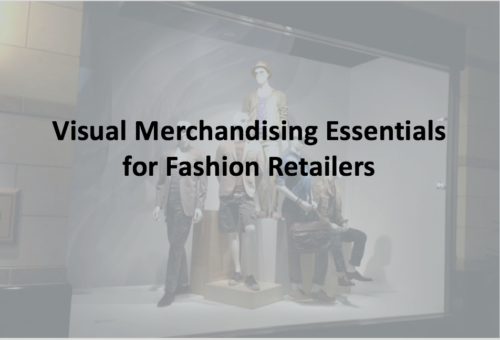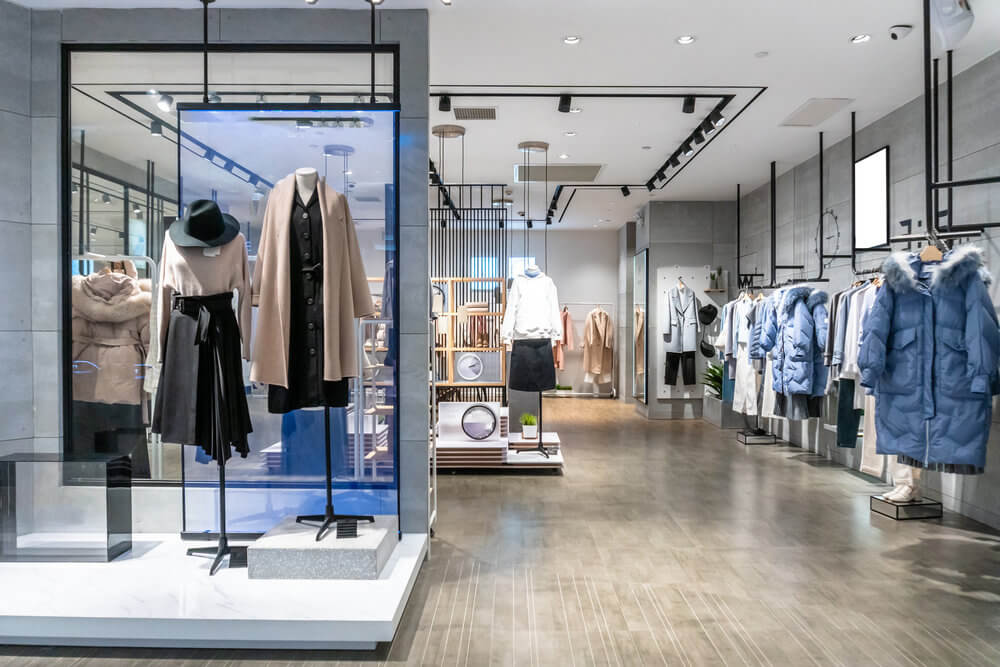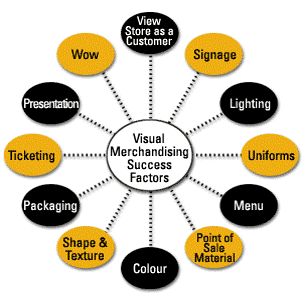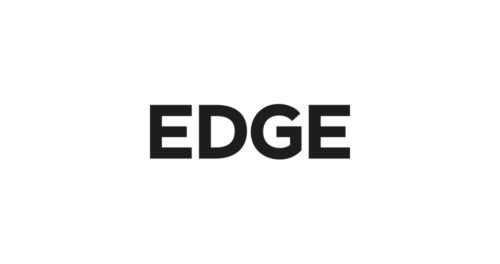
Visual merchandising is the practice in the retail industry of optimizing the products and services to better highlight their features and benefits. The purpose of such visual merchandising is to attract, engage, and motivate the customer towards making a purchase.
Visual merchandising traditionally used in retain brick and mortar stores using a blend of lighting, color combinations, and articles of decor to stimulate an observer and generate interest. Current eCommerce businesses have begun to apply these concepts and techniques as well.
Importance and Purpose of Visual Merchandising
Visual merchandising increases the visibility of the brand and also enhances brand loyalty. Today fashion and retail industries are employing the retail merchandising technique on a high scale. It is one of the most popular methods used to engage customers and has seen a high success rate in the past few years.
The purposes of visual merchandising are quite straightforward and aimed at bringing in profits for the retail store. Other purposes include:
- To increase sales by showing and promoting your merchandise;
- Make the display visually appealing to encourage customers to enter the store;
- Get the customer to pause and “shop” the selling floor;
- Use merchandising to enhance, establish and promote the store’s visual image;
- Improve customers’ shopping experience and entertain them;
- Educate customers about the use or accessorising of a merchandise.
Key elements & Essentials of Visual Merchandising

Marketing techniques have certain elements that make them a successful tactic. Below is what makes up for the elements of visual merchandising:
- Paint the world! What appeals first to the human mind in a visual? It is the colour. A colour palette is the essence of a visual and sets the aura for the display by appealing to the viewers on a subconscious level. Since the colours in a display say a lot about the brand, they should, complement the brand and it’s specific colour scheme. Using one particular colour should be avoided, as too much of it might become overwhelming for the customers.
- Landscapes and more: One of the best ways to capture customers’ attention is by including landscapes as a retail merchandising technique. Landscaping refers to the elevation of products, making it more noticeable. It should be noted that while landscaping, you must carefully choose the size and shape of the displayed merchandise. These details affect which part of the visual merchandise is highlighted due to the lighting.
- Texture: A display can be enhanced with the help of contrast technique, which is known as texture. A display can use textures to convey a message or meaning. While deciding on the texture, you must first analyse the mood or atmosphere you want to set for the display and then find a contrasting texture that supports it. This works wonders in seizing customers’ attention.
 Storytelling: Storytelling has the ability to engage a customer for a long time. For Example - cafes with visuals and dialogues on their wall, one may notice that a lot of customers pay attention to them. This is an effective merchandising technique and is widely used in various retail stores too.
Storytelling: Storytelling has the ability to engage a customer for a long time. For Example - cafes with visuals and dialogues on their wall, one may notice that a lot of customers pay attention to them. This is an effective merchandising technique and is widely used in various retail stores too.
- Finishing Touch: Décor is the final nail in the wall for retail merchandising. The overall theme of the display is enhanced by the décor, without it being a distraction. It adds value to the display and holds customers’ attention. However, when implementing this element, the size, shape, and colour should be carefully picked.
- Create a Visual Marketing Focal Point - Where does the viewer’s eye focus on your display? Do their eyes move toward a specific location on the display? Or are they confused about where to look? Create a hotspot--or focal point. Why? Because hotspots can increase sales by 229 percent. Examine your display from the customer’s point of view: the top, the floor, both sides. Often the focal point is positioned too high for the customer to see. Always check your displays to ensure customers can easily view the hotspots and merchandise. The hotspot is the product, not a visual element you use to add to the story. For example, if you put sand and seashells on the table as part of your sandal collection, make sure the sandals are the focal point and not the sand.
- Expose Customers to the Maximum Amount of Merchandise - A well-designed, impactful display exposes the customer to as much merchandise as possible while avoiding a sloppy mess. The more products customers see, the more they buy. Consider using a circular store layout, which many retailers use. It’s powerful because it exposes customers to more merchandise than traditional aisles. Where your store does use aisles, place a display in the dead center, so customers are forced to stop and look at the products. Have as many displays as possible, and present as much merchandise as possible. But keep displays clean and sharp, and ensure aisles are spacious and barrier-free to prevent deterring customers from products.We used dining tables from World Market to create a visual impact. Displaying our shoes on these tables was kitschy and bold. It caught a customer's eye for sure. And we got many compliments on the display tables since the tables were unique and a story in themselves as opposed to the traditional display pieces stores use.
- Use Empty Space Wisely - There’s a space in all retail stores that is the most underutilized. It’s the section between the displayed merchandise and the ceiling. If this space in your store is empty, you need to start using it. You can use this space for many different things, like signage providing information about products or brands. You can also display customer testimonials with the customer’s name and a picture or profile a designer or supplier. You could also display lifestyle graphics that help customers make associations with your products. For example, a furniture store could display an image of a family cozied up on a couch, emitting those warm, fuzzy feelings that put shoppers in a good mood. A jewelry store could display a woman at a fine dining restaurant wearing a bracelet, creating an association between the store’s jewelry and a luxurious lifestyle. Visual merchandising is multifaceted, and retailers can choose from hundreds of ideas when designing displays. But these tips return the biggest bang for your buck. Use them to make your store as memorable as possible.
Essentials of visual merchandising -
So what refers to visual merchandising? Here’s a list that will tell you all:
- Window displays: Ever heard of the term window shopping? Well, it originated from the idea of window displays. Themes are created for window displays to lure customers into the store. Brands use window displays to make a lasting statement about your merchandise.
- Shelf displays: Shelf displays come into focus after customers enter a store. Brands must strategize about what they want to show on the shelf display and how much shelf space a particular merchandise should get.
- Stock displays: Stock displays are a great marketing spot for featured and profitable products. Generally, the end of aisles, also called “premium spaces” are used for stock displays to maximise the sale of profitable products and merchandise.
- Visual merchandiser: This interesting profession helps deliver visual concepts to promote retails brands. Professional visual merchandisers also can help create effective designs for stores. Moreover, they know exactly what theme is perfect for your visual merchandising endeavour.
Introduction: 10 Trends for 2020
In 2020, evolving consumer preferences, shifting retail models and improved technical capabilities will drive change in global retailing. In this report, we identify five forces and 10 trends that will help reshape the future of retail in the year ahead.
We have been watching some of these forces—such as sustainability and alternative retail models—for some time. While they are not new, what is new is that they have reached new stages of maturity: We see 2020 as a potential inflection point for some of these medium-term or slow-burning forces in retail.
Below are the Top 10 Trends:
“Alt. Retail” Entrenches and Matures
Alternative retail models such as rental, resale and service-driven formats are moving retail beyond its traditional focus of selling (new) products. Collectively, we term these “alt. retail.” In 2020, we expect these models not only to expand their reach to more consumers, but also to mature. In particular, we expect to see these two trends:
 1. Subscription and Rental Models Will Move Closer to Maturity - expect rental and subscription models to reach a new level of maturity. That could mean consolidation of the market through a shakeout, mergers and acquisitions, or retailers that are currently dabbling in subscription or rental to exit. High customer acquisition costs related to customer churn, investments in scaling up, and the costs associated with fulfillment call into question the sustainability of subscription models in particular.
1. Subscription and Rental Models Will Move Closer to Maturity - expect rental and subscription models to reach a new level of maturity. That could mean consolidation of the market through a shakeout, mergers and acquisitions, or retailers that are currently dabbling in subscription or rental to exit. High customer acquisition costs related to customer churn, investments in scaling up, and the costs associated with fulfillment call into question the sustainability of subscription models in particular.
Subscription is already seeing signs of difficulty. In the meal-kits subscription sector, unprofitable Blue Apron has seen sales growth turn deeply negative. And in beauty, Birchbox investors saw their stakes wiped out when the company put itself up for sale in 2018. Given specialist players operating subscriptions at scale have encountered problems, we think retailers that add a subscription service to their regular offerings are likely to confront similar difficulties.
We have seen a number of established apparel retailers launch rental services, but we retain some skepticism that legacy firms will be able to “tack on” a new rental business successfully without major investment in logistics and supply chain. The rental model is fundamentally different than traditional retail—and will require meaningful investment in operations that may, in the end, never scale up.
Given the complexity and cost, we believe it’s more likely established retailers will partner with established rental firms instead of trying to develop their own rental models in house. These partnerships could see rental specialists provide services on a white-label basis for retailers or serve as marketplaces that enable brands and retailers to tap rental demand.
 2. Brands and Retailers Will Deepen Connections Through Services - Physical retail is no longer simply about moving product: Today, evolved brands view the store as a marketing channel for brand building. And services are one part of that brand building.
2. Brands and Retailers Will Deepen Connections Through Services - Physical retail is no longer simply about moving product: Today, evolved brands view the store as a marketing channel for brand building. And services are one part of that brand building.
The boundary between retailers and service providers will become even more blurred in 2020. This is about more than legacy retailers adding in-store experiences and leisure services to regain relevance and tap shopper demand for “experiential retail.” The change is about strong brands and monobrand retailers in categories such as apparel, sportswear and beauty cementing their resonance with consumers by moving into adjacent markets.
We have seen a glut of aspirational sportswear brands broaden their offerings—think TorySport offering fitness classes, Lululemon moving into the restaurant business, SweatyBetty hosting wellness discussions and NIKE organizing fitness events. We see opportunities for this trend to trickle down to less elevated brands and to transfer across to brands in other sectors from beauty to food to home goods.
Inclusivity Moves from Marketing to Product
Brands’ and retailers’ pursuit of greater inclusivity is no longer about just marketing: we’ll see it will manifest in product offerings in 2020. We see this playing out in both luxury and the mass market:
 3. Luxury Moves from Exclusivity to Inclusivity - Luxury is transforming from a culture of exclusivity and uniqueness to one of inclusivity, transparency and egalitarianism. We are seeing this play out not only in marketing but in the types of products being launched by luxury houses. Social values expressed through luxury products now include gender equality, size inclusion, design diversity and selection of ambassadors—although the exclusivity associated with a high price remains.
3. Luxury Moves from Exclusivity to Inclusivity - Luxury is transforming from a culture of exclusivity and uniqueness to one of inclusivity, transparency and egalitarianism. We are seeing this play out not only in marketing but in the types of products being launched by luxury houses. Social values expressed through luxury products now include gender equality, size inclusion, design diversity and selection of ambassadors—although the exclusivity associated with a high price remains.
Diversity is represented in sizes. Online platform 11 Honoré and direct-to-consumer brand Reformation are only two examples of brands pursuing plus-size luxury shoppers. Gender diversity is in evidence, too, with a number of high-end luxury designers, such as Chanel and Salvatore Ferragamo, designing unisex clothes and products.
In cultural terms, inclusivity includes the moves into streetwear by luxury brands to connect with a younger and more diverse customer base, grooming the next generation of loyal luxury customers. In 2020, we expect luxury brands to continue taking style inspiration from streetwear and skateboard trends, and to incorporate more sporty and casual urban aesthetics into designs.
 4. Expect More Inclusive Products in the Mass Market, Too - In 2020, more mass-market brands and retailers will see inclusion not as a marketing add-on, but as shaping the product offering. We envisage growth in niche and tailored segments within apparel and beauty.
4. Expect More Inclusive Products in the Mass Market, Too - In 2020, more mass-market brands and retailers will see inclusion not as a marketing add-on, but as shaping the product offering. We envisage growth in niche and tailored segments within apparel and beauty.
Adaptive apparel—clothing and footwear designed for those with disabilities—is one such opportunity. Kohl’s, Target, ASOS and Marks & Spencer have launched dedicated offerings for consumers with disabilities. We expect more retailers to join them in 2020.
Larger women, once marginalized, are now courted by designers, retailers and brands—and plus-size offerings are moving beyond the core apparel staples of jeans, tops and dresses. We have seen companies build out offerings in sportswear, intimates and bridal dresses. These and other niche areas present opportunities for retailers to cater to a still-underserved consumer segment, and capture share in a market that we estimate will be worth around $32 billion in the US in 2020.
In beauty, companies are building out niche categories around life-stage and “age inclusivity,” for example, a new segment in skincare for menopausal women. A 2019 survey by AARP found 70% of women aged 40 and older want more beauty and personal grooming products tailored to perimenopausal or menopausal women, showing there is unmet demand from this demographic.
Western Retailers Nudge Closer to China’s Retail Models
China leads the world in digitalized retailing, in Alibaba’s “New Retail” model and beyond. Tencent’s WeChat app provides an all-in-one engagement and commerce tool while Alibaba makes online retailing spectacular through its Singles’ Day event. We see these trends and other elements of “New Retail” permeating the West, including through the following two trends:
 5. The Battle to be the West’s Super App - WeChat is China’s super app, enabling instant messaging, posting photos of what users are up to for their contacts to see, making audio and video calls, engagement with brands through WeChat stores, digital payments, sending gifts—and more. In 2020, we expect social platforms in the West to move closer to this model, with social and communications platforms moving closer to the super-app model.
5. The Battle to be the West’s Super App - WeChat is China’s super app, enabling instant messaging, posting photos of what users are up to for their contacts to see, making audio and video calls, engagement with brands through WeChat stores, digital payments, sending gifts—and more. In 2020, we expect social platforms in the West to move closer to this model, with social and communications platforms moving closer to the super-app model.
Facebook looks to have a headstart, supported by its ownership of WhatsApp and Instagram. These brands have both been adding features to enable social commerce: WhatsApp now offers a catalog or storefront feature and Instagram now includes a checkout function. Facebook has launched Facebook Pay across its platforms. Meanwhile, Alphabet-owned YouTube has launched shoppable ads.
When Coresight Research surveyed US consumers in November, some 61% of social media users said they use social media platforms as part of the shopping process. In descending order, Facebook, Instagram, YouTube and Pinterest are the top platforms used as part of the shopping journey, according to our survey.
 6. Shopping Festivals Will Further Distort Traditional Shopping Patterns - Existing shopping festivals are likely to get bigger, better, more entertaining and more engaging in 2020. Digital-first retailers will continue to take festivals into the “real world” with pop-ups, entertainment events, marketing campaigns and tie-ups with physical stores. For e-commerce retailers that focus more on functional shopping than fun shopping, shopping holidays are an opportunity to build relationships with customers in the real world.
6. Shopping Festivals Will Further Distort Traditional Shopping Patterns - Existing shopping festivals are likely to get bigger, better, more entertaining and more engaging in 2020. Digital-first retailers will continue to take festivals into the “real world” with pop-ups, entertainment events, marketing campaigns and tie-ups with physical stores. For e-commerce retailers that focus more on functional shopping than fun shopping, shopping holidays are an opportunity to build relationships with customers in the real world.
The impact of bigger, more engaging shopping holidays will not only be a short-term boost for the retailers operating the festivals (and possibly a hit to their rivals), but we expect the gravitational pull of festivals to continue the incremental distortion of established shopping patterns. In the US, we have already seen the importance of the traditional holiday season diluted as consumers increasingly shop for the holidays year-round and as events such as Prime Day and Black Friday in July pull forward spending from the year-end peak.
The biggest retailers can create their own shopping holidays, and “own” them the way Amazon owns Prime Day and Alibaba owns Singles’ Day. We also see opportunities to grow existing events, such as Black Friday in July, which is still an emerging event in the US. And, retailers can piggyback on festivals making their way from one region to another: For example, Amazon launched on China e-commerce platform Pinduoduo for Black Friday in 2019—still an emerging event in China.
Supply-Side Technologies Will Make Retail Even Faster
New and emerging technology (or new and emerging applications of existing technology) will enable retailers to move faster and operate leaner. These are two trends we expect to see in this space:
 7. 5G To Make Retail Faster and More Connected - In 2020, 5G will make retail operations and supply chains faster, and support the migration of browsing and buying to mobile devices.
7. 5G To Make Retail Faster and More Connected - In 2020, 5G will make retail operations and supply chains faster, and support the migration of browsing and buying to mobile devices.
5G technology promises wireless speeds that rival a wired connection, with more capacity and greater responsiveness (lower latency). 5G will offer peak speeds of 10–20 gigabits per second, plus latency—the amount of time between the command and the related action—of less than 1 millisecond and the ability to connect one million devices per square kilometer (the equivalent of 0.39 square miles).
5G will have a significant impact on retail, improving and expanding existing applications and powering new use cases. Applying the technology to retail operations is expected to translate into additional revenue—particularly from e-commerce operations, in which the enhanced connectivity will lead to more straightforward online shopping journeys, but also from more extensive and efficient use of in-store technology, which should also support sale conversion.
 8. Automation Becomes Entrenched Across the Supply Chain - Analytics, automation and robotics will become more prevalent in manufacturing, logistics and stores, as legacy firms continue to turn to new technologies to move faster and offer greater differentiation. Digitalizing the supply chain is not new, but we will see it at greater scale in 2020.
8. Automation Becomes Entrenched Across the Supply Chain - Analytics, automation and robotics will become more prevalent in manufacturing, logistics and stores, as legacy firms continue to turn to new technologies to move faster and offer greater differentiation. Digitalizing the supply chain is not new, but we will see it at greater scale in 2020.
Manufacturing will become incrementally more automated and data driven, enabling and encouraging greater onshoring and near-shoring of production in industries such as apparel.
Robotics and artificial intelligence will further embed themselves in logistics operations, powering a further acceleration in distribution and delivering operational efficiencies. Advanced analytics will play an increasing role in anticipating and responding to demand across the retail supply chain.
Retailers will continue to embed technology in stores—but selectively. Robotics in stores has gone beyond gimmick-driven customer service-focused trials to focus on bottom-line gains such as in inventory management. And retailers—especially those in nondiscretionary categories such as grocery—will continue to turn to customer-facing technologies to reduce friction in the shopping process, especially at checkout.
Sustainability Concerns Will Prompt Incremental Reshaping of Consumer and Retailer Activity
We have seen sustainability grow in significance for a few years: it is a slow-burning trend that is incrementally impacting retail. In 2020, we expect awareness of sustainability—by companies and consumers—to continue to impact retail.
These are two of the ways we expect it to play out:
 9. Sustainability Evolves To Become Sustainability + Transparency - In 2020, brands and retailers will provide more detail on the sourcing and composition of products than ever before, as sustainability evolves to become sustainability + transparency. Vague claims about supply chain sustainability will look increasingly insufficient in the eyes of consumers: sustainability will increasingly focus on disclosure.
9. Sustainability Evolves To Become Sustainability + Transparency - In 2020, brands and retailers will provide more detail on the sourcing and composition of products than ever before, as sustainability evolves to become sustainability + transparency. Vague claims about supply chain sustainability will look increasingly insufficient in the eyes of consumers: sustainability will increasingly focus on disclosure.
Already, supply-chain transparency has moved firmly into the mass market, with Amazon publishing details of its private-label suppliers and H&M disclosing information on materials, production country, suppliers and factories for every product it offers.
The implication? Mass-market retailers looking to compete on these terms will need to be equipped with renewed confidence in their supply-chain partners, or risk disclosure backfiring. As mainstream retailers seek to increase disclosure among, they will be prompted to clean up their supply chains and consolidate with best-in-class suppliers.
 10. Shoppers Will Turn to Aftercare and Closed-Loop Models - The only truly sustainable shopping behavior is to buy less and, in 2020, we expect more consumers to “walk the walk” by limiting purchases, if even only a little. Just as purchasing preworn apparel has quickly become more mainstream, so we see opportunities for the aftercare segment to grow in scale. In particular, we expect more shoppers to turn to service providers that can revive, mend and restore clothing, footwear and accessories.
10. Shoppers Will Turn to Aftercare and Closed-Loop Models - The only truly sustainable shopping behavior is to buy less and, in 2020, we expect more consumers to “walk the walk” by limiting purchases, if even only a little. Just as purchasing preworn apparel has quickly become more mainstream, so we see opportunities for the aftercare segment to grow in scale. In particular, we expect more shoppers to turn to service providers that can revive, mend and restore clothing, footwear and accessories.
Just as retailers have done with clothing recycling programs, resale platforms and a greater focus on sustainable materials, we expect to see retailers partner with service providers to offer apparel aftercare services (tying into our Alt. Retail trend for more service-focused retailing). And the aftercare market dovetails with the adjacent resale market, as shoppers seeking to sell higher-value apparel will see a return on investment in fixing minor problems or restoring luster.
We also expect to see closed-loop models gain in popularity, most notably in apparel. Subscription, membership or leasing programs that let customers return worn clothing for recycling in exchange for fresh garments tap demand for newness and offer a sustainability benefit. And these services will piggyback on growing consumer willingness to adopt “retail as a service” models, where they access products on a subscription basis rather than outright purchase.







 Storytelling: Storytelling has the ability to engage a customer for a long time. For Example - cafes with visuals and dialogues on their wall, one may notice that a lot of customers pay attention to them. This is an effective merchandising technique and is widely used in various retail stores too.
Storytelling: Storytelling has the ability to engage a customer for a long time. For Example - cafes with visuals and dialogues on their wall, one may notice that a lot of customers pay attention to them. This is an effective merchandising technique and is widely used in various retail stores too. Introduction: 10 Trends for 2020
Introduction: 10 Trends for 2020










Leave a Reply